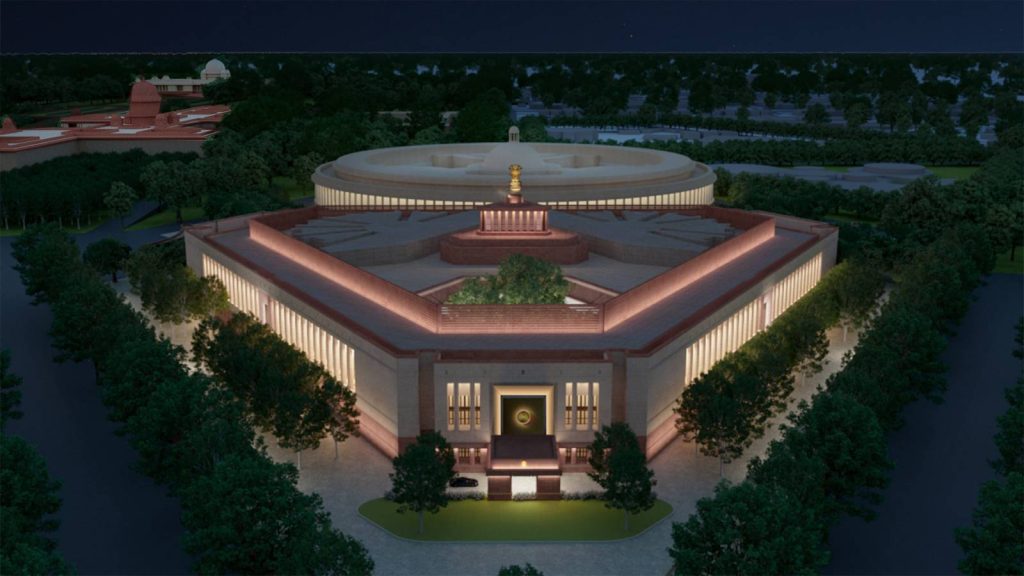Tsuktiben Jamir
The Parliament of India is set out to have a fresh look with a new Parliament building in New Delhi, as part of India’s Central Vista Redevelopment Project launched in 2019 with Bimal Patel as the architect in charge of redesigning the Central Vista. On December 10, 2020, Prime Minister Narendra Modi laid the cornerstone for the new Parliament building in New Delhi.
The previously circular-shaped Parliament House designed by British architects Herbert Baker and Sir Edwin Lutyens during the colonial era with two storeys and a 144-pillared colonnade made of sandstone will be replaced by a triangular one. Tribune India writes that the triangle’s three sides represent the significance of triangles as a holy geometric shape in many religions. The three national icons of the lotus, peacock, and banyan tree will be the principal motifs of its interiors. This structure will spread across 65,000 square metres, with a central courtyard, and is said to be earthquake-proof.
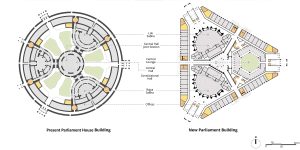
Courtesy: Ministry of Housing and Urban Affairs
Indian art and architecture have always been greatly inspired by cultural beliefs and history. As such, according to The Indian Express, the new Parliament building will display about 5,000 works of art, including paintings, wall panels, stone sculptures, and metal items, all of which adhere to the Vaastu Shastra and Sanatan Parampara guiding principles. Moreover, the new building will have six entrances, each of which will have guardian sculptures of animals. These animals have been purposefully and carefully chosen based on their significance in the Indian culture, their compatibility with Vaastu Shastra, and their propensity for success, triumph, and knowledge. Each animal that was selected for the structure has a set of affirmations that are meant to promote peace and harmony. A gaj (elephant), which is symbolic of wisdom, riches, intelligence, and memory, stands guard at the ceremonial entrance to the north. The north direction is connected to Mercury, the source of superior wisdom, according to Vastu Shastra. The Ashwa (horse), a representation of kingship’s qualities of endurance, strength, power, and speed, is standing guard and prepared at the southern gate. The Garuda (eagle), which guards the eastern gate, stands for the aspirations of the populace. East is related to the rising sun, which is a symbol of success according to Vastu Shastra.
Moreover, a hamsa (swan), which stands for caution and wisdom, is located at the entrance on the northeastern side. The remaining entrances feature Makara, a legendary aquatic monster made out of parts of many animals, which stands for harmony in diversity, and Shardula, a mythological creature said to be the most powerful of all living things, which represents the might of the nation’s citizens.
The building’s decoration and design were the work of more than a thousand craftspeople and artists. It has been stated that all the artworks will be newly commissioned. While the Parliament is meant to belong to the people of the country and represent their ambitions, an attempt was made to incorporate indigenous and grassroots artists from all around the nation. The artefacts would represent Indian identity and ethos in terms of both culture and civilisation.
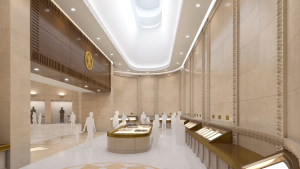
Courtesy: Ministry of Housing and Urban Affairs
India has always been a connoisseur of exquisite art as far as history dates back. This is plainly evident through all the intricate, detailed and beautiful ancient architecture, sculptures and monuments that have withstood time itself. There is no doubt that this same care and passion will be put into building the new Parliament House. The building is said to have three ceremonial anterooms, six granite monuments honouring those who were involved in the making of the Constitution as well as the freedom struggle, four galleries for each of the two Houses, several Indian galleries, and a gallery devoted to the Constitution.
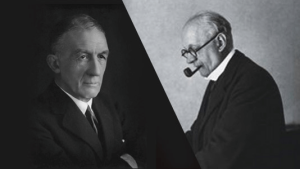
Courtesy: Ministry of Housing and Urban Affairs
The old building as it will now be called has witnessed India through the declaration of Independence and the adoption of the Constitution. It was originally built for the British Raj to exercise their rule in India. However, with a potential expansion in 2026, the number of Parliamentarians is outpacing the capacity of the current Parliament building, and accommodation capacity will become an issue. Moreover, it is no surprise that the first Parliament House was quite ancient in design and structure, and required modern improvements and amenities.
The Central Government said that the New Parliament building is built to last more than 150 years and will have a seating capacity increase of more than 150%. The Rajya Sabha will feature a motif based on our national flower, the lotus, while the New Lok Sabha’s interior will be decorated around the peacock, India’s national bird.
It is undeniable that the rich and versatile cultural aspect of India will be reflected in the new building with breathtaking and unique designs of many talented artists, architects and sculptures. The new Parliament building is definitely going to be an iconic structure that will symbolise the country’s democracy, the unique art and architectural style of India as well as the advancement and modernity of the nation.
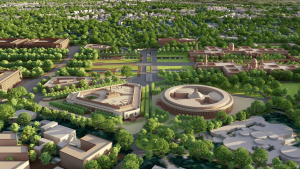
Courtesy: Ministry of Housing and Urban Affairs

